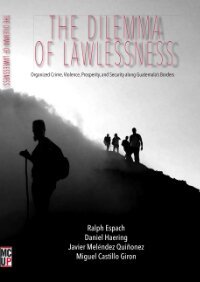By Team of Analysts at the Global Initiative Against Transnational Organized Crime (GI-TOC)’s Observatory
In 2023, Tunisia emerged as the primary country of embarkation for irregular migrants seeking to reach Europe, eclipsing Libya, which had long been the main North African departure point. In total, some 97 306 migrants arrived in Italy from Tunisia, just over three times as many as in 2022. Tunisia’s new status as North Africa’s leading embarkation hub followed four years of constant growth in irregular migration and human smuggling. In previous years, the increase in departures had primarily involved Tunisian nationals. In 2023, however, the surge in irregular migration was largely driven by foreigners, mostly from West Africa and Sudan. While some of these migrants were long-term residents in Tunisia, the spike was fuelled by a notable and rapid rise in the arrival of sub-Saharans across the border with Algeria and, to a lesser extent, the border with Libya. The high demand for departures led to a more complex smuggling ecosystem in Tunisia, with networks offering increased and diversified services. There were also key shifts in the way foreign migrants, in particular, embarked, with a growing number forgoing engagement with smugglers and turning instead to self-smuggling. However, as in previous years, it was the worsening of the country’s complex political, social and economic problems that spurred clandestine departures and licit migration. While some aspects of the multidimensional crisis facing Tunisia improved, overall the challenges remained acute, with severe drought, uncertain financing conditions and the slow pace of reforms hampering economic recovery, while failures of governance continued to affect the delivery of public services such as water, education and health care. Moreover, a dramatic shift in Tunisia’s approach to irregular migration led to a deterioration in conditions for migrants and an acceleration in the pace of foreign migrants leaving the country. In February, President Kais Saied denounced undocumented sub-Saharan migration to Tunisia, triggering a series of events that resulted in foreign migrants being evicted from their homes, dismissed from their jobs, and threatened with arrest and violence. This growing climate of fear in turn influenced and hastened the departure of undocumented migrants from the country. In response to rising migration, the Tunisian government instituted tighter security controls, with occasional escalations in response to spikes in departures. Enforcement in maritime areas and along the land borders with Libya and Algeria intensified in the second half of the year. In addition, the Tunisian government increasingly resorted to the forced transfer of migrants – mainly to and across the borders with Libya and Algeria – in order to manage tensions among the local population and curb departures. According to public reports documenting the testimonies of deported migrants, a notable element of these forced transfers was the level of violence and abuse inflicted by the Tunisian security forces. The exceptional growth in irregular migration from and through Tunisia in 2023 marked a rapid escalation of trends observed since 2020. Given the enduring influence of the factors driving irregular movement from Tunisia and other key countries of origin, interest in departures to Europe is expected to persist further into 2024. However, volumes will be influenced by a number of variables, including the effectiveness of security forces in managing increased migratory pressures and the adaptability of smuggling networks to evolving enforcement tactics. This is the latest Global Initiative Against Transnational Organized Crime (GI-TOC) monitoring report on human smuggling in Tunisia. It builds on the series of annual reports that has been issued since 2021, tracking the evolution of human smuggling in Tunisia, as well as the political, security and economic dynamics that influence it.
Geneva, SWIT: Global Initiative Against Transnational Organized Crime, 2024. 41p.


















